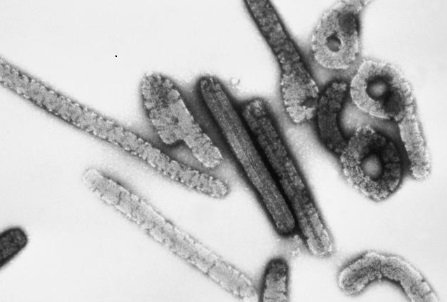Rwanda is currently battling its first outbreak of the Marburg virus, a deadly disease with 46 confirmed cases and 12 fatalities so far. Alarming statistics show that healthcare workers make up 80% of the infected individuals, placing immense pressure on the country’s already strained healthcare system. With only about 1,500 doctors serving a population of over 13 million, Rwanda’s medical infrastructure is facing an enormous challenge.
Understanding the Marburg Virus
The Marburg virus is one of the most dangerous pathogens known to humankind, causing a disease known as Marburg Virus Disease (MVD). The fatality rate of MVD can range from 24% to 88%, depending on how effectively an outbreak is managed. First identified in 1967 in Marburg, Germany, the virus is closely related to Ebola, as both are filoviruses. While the initial discovery occurred in Europe, most subsequent outbreaks have been reported in Africa.
How MVD Spreads
The Marburg virus was first transmitted to humans through contact with fruit bats, specifically the Rousettus species, which live in caves and mines. Once a human is infected, the virus spreads through direct contact with bodily fluids such as blood, vomit, or urine, or through contaminated surfaces. Healthcare workers are particularly vulnerable due to their close interaction with infected patients.
Symptoms of Marburg Virus Disease (MVD)
Symptoms of MVD usually appear between 2 to 21 days after infection and include:
- High fever
- Severe headache
- Muscle pain
- Watery diarrhea
- Abdominal pain
- Vomiting
In severe cases, patients may experience hemorrhaging, leading to internal bleeding. Most deaths occur within 8 to 9 days after symptom onset due to severe blood loss and shock.
Prevention and Treatment
Currently, there are no approved vaccines or specific treatments for Marburg virus disease. Supportive care, including intravenous fluids and symptom management, is the primary method of treatment. Rwanda is working to protect healthcare workers and patients by exploring experimental vaccines and treatments. The Sabin Vaccine Institute has already provided 700 doses of an experimental vaccine to frontline medical staff in the country.
About the Marburg Virus
The Marburg virus was initially identified during outbreaks in Marburg and Frankfurt, Germany, and in Belgrade, Serbia, in 1967. It causes a form of hemorrhagic fever, characterized by severe bleeding and organ failure. The virus spreads between humans through contact with bodily fluids, and its natural host is believed to be fruit bats.
While Marburg outbreaks are rare, their effects are often devastating. Rwanda’s swift response, including the exploration of experimental vaccines, is crucial to containing this outbreak and protecting its healthcare system from further strain.
Looking Ahead
Rwanda’s first encounter with the Marburg virus highlights the ongoing global challenges posed by emerging infectious diseases. With healthcare workers at high risk and no specific treatment available, the country faces an uphill battle. However, the experimental vaccine and heightened awareness offer a glimmer of hope in controlling the outbreak and preventing further fatalities.


